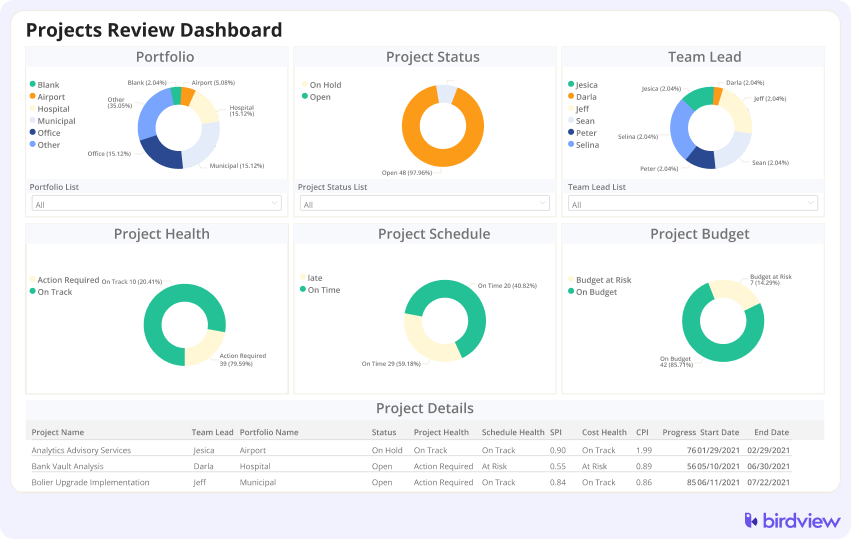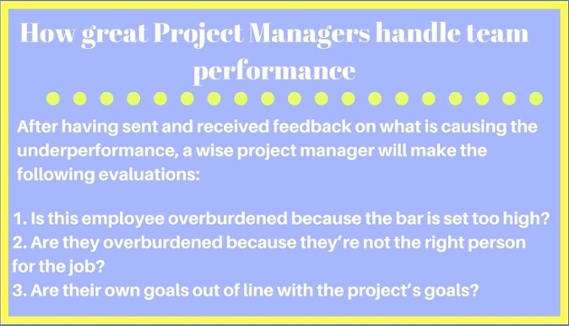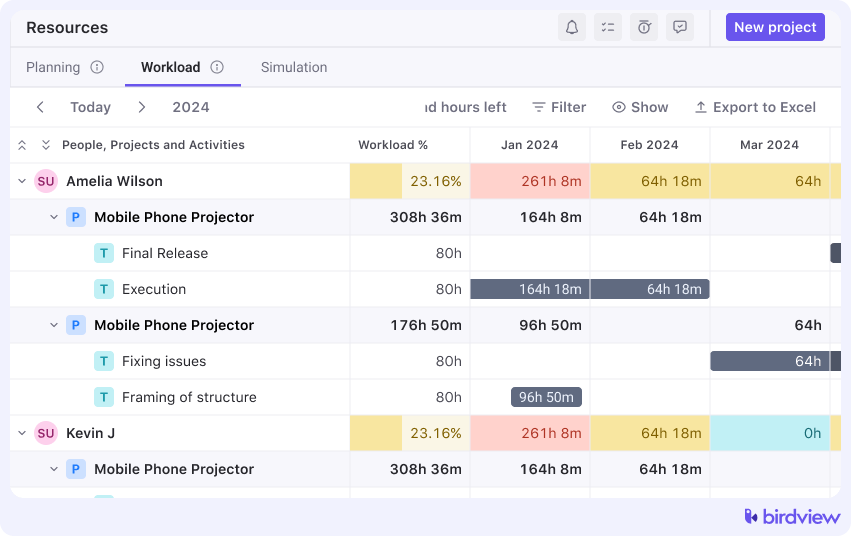Have you ever felt like your projects are slipping through the cracks–missing deadlines, going over budget, or struggling to meet expectations? Managing a project to success isn‘t easy, and without a solid plan to monitor and optimize performance, things can quickly spiral out of control. That‘s where project performance management comes in. In this article, we‘ll break down the key components of project performance management and show you how to plan, measure, and optimize your projects like a pro.
What is project performance management?
Project Performance Management involves the systematic process of planning, monitoring, and optimizing the various aspects of a project to ensure its successful and efficient execution. It encompasses a range of activities aimed at maximizing the project’s effectiveness and meeting its objectives. Key components of project performance management include:
Planning: Defining clear project objectives, scope, and deliverables. Establishing key performance indicators (KPIs) to measure success.
Monitoring: Regularly tracking and assessing project progress against predefined goals and benchmarks. This involves keeping an eye on timelines, budgets, and the quality of deliverables.
Measurement: Quantifying project performance using relevant metrics and indicators. This may involve assessing factors such as cost efficiency, schedule adherence, and stakeholder satisfaction.
Analysis: Analyzing data and performance metrics to identify trends, potential issues, and areas for improvement. This allows project managers to make informed decisions and adjustments.
Optimization: Taking corrective actions and implementing changes to enhance project performance. This might involve reallocation of resources, adjustments to the project plan, or addressing bottlenecks.
Communication: Maintaining open and transparent communication with the project team and client. Keeping them informed about project progress, potential challenges, and mitigation strategies.
Risk Management: Identifying and addressing potential risks that could impact project performance. Developing strategies to mitigate risks and ensure project success.
Continuous Improvement: Learning from past projects and applying lessons learned to enhance future performance. Implementing feedback loops and adapting strategies for ongoing improvement.
In essence, project performance management is about proactively managing all aspects of a project to ensure it stays on track, meets its objectives, and delivers value to stakeholders. It is a dynamic and iterative process that requires collaboration, adaptability, and a commitment to continuous improvement throughout the project lifecycle.
What makes a great project manager?
Is it their morale-boosting enthusiasm? Their ability to effectively delegate duties to their team members? Their hair?
While the above are all attributes of a great project manager (minus the hair, as one can have great hair and still be a lousy manager), only a single characteristic defines greatness in a project manager: their effectiveness in managing their project team‘s dynamic. In terms of management, an effective project manager will take into account not just what is best for each individual member of their staff, but what is best for the entire project team, and thus the project itself.
Managing the team dynamic involves not only making sure morale is up and that staff is motivated to complete their individual tasks. A team‘s dynamic relies heavily upon how members work together as a whole, each completing their tasks at a consistent pace. A chain is only as strong as its weakest link.
But what about the strongest link?
Many articles have been written on the detriment that an underperforming employee generates for organizational efficiency and success. However, how many times have you thought about the drawbacks of having an overperformer on your project team?
Every project manager wants a team of high-performing employees, operating at their maximum capacity. Deadlines need to be met, data needs to be reliable, and employees should respect SOPs and be on board with company culture. High-performing staff will be dedicated to the overall project’s success.
An overperforming employee often shares much in common with an underperformer. For example, they may not concern themselves with the success of the project and the organization; they tend to only think of themselves, among other selfish traits. In this article, we will discuss how a great project manager should handle not only project underperformers but overperformers as well.
Many project management tools, such as Birdview, offer built-in performance dashboards. These dashboards allow managers to instantly track KPIs, visualize project progress, and identify areas where immediate interventions may be needed. Utilizing such tools can significantly reduce manual reporting and help teams remain agile.

Managing Lagging Projects
An underperformer spreads their lack of commitment like wildfire if not properly managed. If not recognized and swiftly rehabilitated, an underperformer will demonstrate that one need not work their butt off on the project; you can get away with being lazy or ignoring quotas. Soon you will have an entire team of underperformers. Obviously, it is far more time/energy intensive for a manager to get a team back on track than a single employee.
The following steps and techniques are what great project managers employ to ensure that underperformance is nipped in the bud before it can metastasize and infect the entire project team.
1. Metrics to monitor employee project performance
The savviest managers will have safeguards in place to monitor each aspect of team performance, everything from sales revenue, missed deadlines, tardiness, and everything in between. Metrics help you measure performance slumps before they can turn into chronic underperformance.
2. Give feedback/listen to feedback
When a project manager sees a team member beginning to lag in performance, they will touch base with the employee and see if these deficiencies are going to become a trend or if it‘s perhaps due to external factors, and take appropriate action. Whatever the case may be, discussing the project performance with the employee is key to finding the remedy.
Maybe they‘re having problems at home, or maybe they just don‘t care. There‘s only one way to find out: by opening a dialogue.
3. Evaluation of goals and expectations of all parties
After having sent and received feedback on what is causing the underperformance, a wise project manager will make the following evaluations:
- Is this employee overburdened because the bar is set too high?
- Are they overburdened because they‘re not the right person for the job?
- Are their own goals out of line with the project‘s goals?

Post-evaluation the project manager will take the necessary steps to adjust either the project expectations, reassign the employee to tasks better suited for them, or replace the employee with a more competent and/or dedicated team member.
4. Collaborative adjustments for team underperformance
There is any number of reasons why an employee or, at worst, your entire team can be underperforming. If it is indeed the entire team, with deficiencies across the board, once you have identified why your team is underperforming, take a collaborative approach. Set a meeting with your team and relevant department heads, but don‘t use this as an opportunity to vent your frustrations.
Tell your team directly that project performance is down, that it is a problem, but that together the team can fix this if you work collectively. In this case, your optimism will help boost morale, and get your team of underperformers motivated to get back on track and share in the collective future success of the company.

Managing Over Performers
We know this sounds like a best-case scenario: you have an employee completing tasks way ahead of schedule, submitting detailed, impeccable work, and showing up early and leaving late.
Ever heard of too much of a good thing? Well, that doesn‘t even apply to over-performers.
There is a stark contrast between high performance and overperformance. A high-performer is dedicated to the team, while an overperformer is likely in pursuit of stroking their ego and making their teammates appear inferior to them.
Nobody likes a show-off. Overperformers are toxic to your team and can suck the morale out of your high-performing staff. Still, like underperformers, they can oftentimes be rehabilitated and reeled in to get back on board with the rest of the team.
1. Accept and approach over performers as problem staff
That‘s right. In the same way that an underperformer is a problem for your team, so is an overperformer. Before you begin to even consider how to deal with them, you must accept that they are not a boon to your project; they are a detriment.
You may be tempted to tell yourself “Well, if they can do such an amazing volume of work, maybe I should get the rest of my team to work as hard as they do...”
No.
Unless the rest of your team is missing quotas and deadlines, they are doing just fine. The team works best when everyone moves at an equal or close-to-equal pace. The overperformer is the problem.
2. Confront and dialogue with over-performers
Sometimes it may seem daunting, but how do you tell somebody that they are doing too good of a job? The thing is, if an employee is going above and beyond to the degree that they are making your other capable, high-performing staff feel inferior then they are not doing too good of a job; they are not being a team player.
We mentioned before that often performers are stroking their egos or trying to belittle their colleagues. This is often the case, and due to their overwhelming work output, an overperformer may feel entitled to abuse your SOPs and company culture. However, there is a small chance that your employee’s overperformance is due to being a workaholic, oblivious to their impact on their teammates, or a similar scenario.
Overperformers are intimidating, but you are not just their manager, but the entire team‘s manager. It is your duty to dialogue with an overperformer and see what the case may be. How else would you know whether you are dealing with a toxic megalomaniac or someone simply self-pressuring themselves to work as much as possible? Toxic employees should be avoided like the poison that they are. Good, reliable employees are 54% more likely to quit their job in the presence of a single toxic employee.
Determine whether they are a toxic employee or not. Look for the following traits:
- Are they abusing company hours, excusing themselves because of their work output?
- Are they micromanaging or wrongfully delegating duties to colleagues?
- Is their language demeaning or belittling in the office?
If they do not exhibit the above traits, likely it is that you have not done a well enough job as a manager onboarding them and familiarizing them with company culture, and the emphasis that the team operates as a team. No biggie, as this can easily be solved. If it turns out they are a toxic primadonna, well, we‘ll get to that later.
3. Reign in over performers and put them to work
So, say that you have a non-toxic overperformer. After dialoguing with them, assess whether they understand your message on the importance of teamwork, and if they can tone down their furious output to match the pace of their colleagues.
You might be asking yourself, “What if they are a true genius eagle-level superstar who is plainly better than the rest of my staff?” Well, put them to work as a team coach.
Idle hands do the devil‘s work, and if an overperformer can‘t help but accomplish tasks with greater speed than your project staff, have them spend their free time assisting and coaching other teammates. This will boost morale, and teammates will be thankful for the added assistance and/or insights into how to complete tasks more efficiently.
Meanwhile, it‘s also crucial to keep track of both underutilized and overutilized team members. Overperformance in one team member may indicate that others are underutilized, while consistent overperformance can lead to burnout or conflict. Project management software can help track resource utilization and flag imbalances, allowing managers to adjust workloads accordingly and prevent conflict from escalating within the team.

Under or overperformance
We walked you through the methods to manage overperformance and underperformance on your team, and hopefully, make the best of a bad situation. However, some team members cannot be reformed.
All managers know the drain of underperforming staff. They are missing deadlines, and quotas, essentially being an entire drain on the project, and stifling the progress made by high-performing team members. It is easy to let them go if you have taken the appropriate steps and they still haven‘t improved.
It may be more difficult to let an overperformer go. However, take into account the research done by Harvard Business School: removing a toxic employee saves on average $12,500 in team turnover costs, while only 1% of over-performers add $5,400 in revenue.
Hopefully, your over/underperformers can be reeled in or motivated to get with the program. Give them a chance, but if you do not see improvement soon enough, it is time to cut ties and save your project team.



